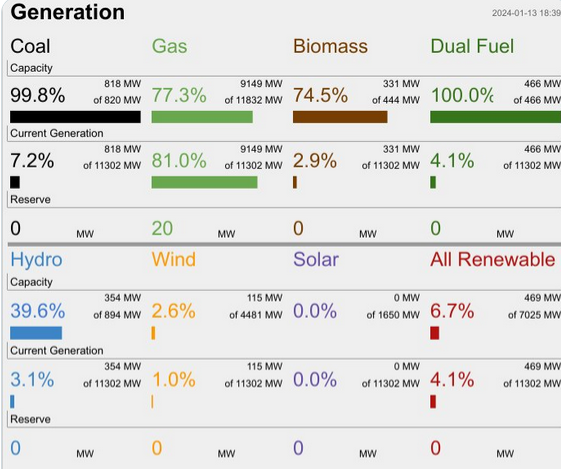THE government have been feeling generous with your money again. They have just given the go-ahead for Drax to fit carbon capture technology (CCS) to their wood burning power plant in North Yorkshire. They are also expected to extend the subsidy agreement which already rakes in £700million a year for Drax and is due to expire in 2027.
The idea is that the carbon dioxide emitted from burning all those trees will be captured and piped into storage somewhere under the North Sea, in theory making it carbon negative. All to meet our Net Zero targets, of course.
Unfortunately this will cost money, an awful lot of it. And guess what, you and I will have to pay for it all through our electricity bills. Ember, the energy analyst company, estimates that the total subsidy each year will add up to £1.7 billion, £42 billion over the lifetime of the plant.
This only covers the operating costs of the plant, not the multi-billion capital costs involved, which will also require some form of subsidy. Operating costs for CCS are much higher because it is an energy-intensive process. When added to a biomass plant it would consume some of the heat from the burning of the biomass that would otherwise be used to generate electricity. This means that to produce the same amount of electricity more wood would need to be burnt.
Even environmentalists are furious with the plans. They have long complained that burning wood pellets at Drax destroys virgin forests in North America. Moreover CCS technology is unproven at scale, and is unlikely to remove all the carbon dioxide even if it does work.
Burning wood is also bad from an air pollution point of view; much worse than coal in fact.
At best Drax might cut its emissions of CO2 by 8million tonnes a year, 2 per cent of the UK’s total. Is that really worth spending £40billion for?
Don’t be fooled by 99mph wind claims
THE Met Office have been up to their tricks again! The media has been awash with claims that Storm Isha brought 99mph winds, based on Met Office reporting.
This time the claim was based on data from Brizlee Wood in Northumberland. Brizlee is no ordinary wood: it is an RAF radar station at the top of an 820ft hill in the middle of the Alnwick Moors, itself a highly exposed area.

Brizlee Wood
As usual, winds at the mountainous and clifftop sites favoured by the Met Office bear no relationship to the rest of the country. A few miles away, at the seaside village of Boulmer, average wind speeds were just 34mph.
Every time we get windy weather, the Met Office report only the places with the strongest gusts. This time, in addition to Brizlee, they listed Capel Curig (half way up a mountain in Snowdonia), the Needles, Shap (800ft) and Salsburgh ( a village at 900ft in the Lanarkshire hills).
Most of these high-altitude stations have been operational only since the 1990s, around the time that automatic weather stations began to appear. Brizlee was opened in 2021, so it is hardly surprising we have never heard of 99mph winds in Northumberland before.
Until a few years ago, the Met Office’s monthly weather reports regularly presented wind speeds in places where people lived. In January 1993, as an example, they told of 89mph in Glasgow, 83mph in Edinburgh and 94mph in Leeds. They did not feel the need to exaggerate winds by using weather stations totally unrepresentative of the rest of the country.
Their motivation is clear. They want people to believe our weather is becoming more extreme. They even wheeled out one of their meteorologists on BBC Radio 5 on Monday to claim that the ‘more intense’ storms the UK is experiencing are caused by climate change.
Instead of peddling falsehoods, maybe she should have said that storms in this country were much more intense in the 1980s and 90s, as the Met Office’s own State of the Climate confirmed last year: ‘The most recent two decades have seen fewer occurrences of max gust speeds above these thresholds [40/50/60 kts] than during the previous decades, particularly comparing the period before and after 2000. This earlier period [before 2000] also included among the most severe storms experienced in the UK in the observational records including the “Burns Day Storm” of 25 January 1990, the “Boxing Day Storm” of 26 December 1998 and the “Great Storm” of 16 October 1987. Any comparison of storms is complex as it depends on severity, spatial extent and duration. Storm Eunice [in 2022] was the most severe storm to affect England and Wales since February 2014, but even so, these storms of the 1980s and 1990s were very much more severe.’
Yes, Isha was probably the strongest storm of the winter. But the public are entitled to all of the facts from the Met Office, not just their propaganda.
It’s cold and there’s no wind . . .
GUESS what? It gets cold in Canada during the winter! And when it gets cold, the wind often drops, as Alberta found out to its cost a couple of weeks ago. While demand increased, wind power collapsed to virtually nothing, generating just 1 per cent of the province’s electricity. Needless to say, their thousands of solar panels were supplying not a single KW in the early evening.
As power supply became tight, the Alberta Electric System Operator issued a critical emergency alert, urging Albertans to reduce electricity use to minimise potential cuts across the province. The appeal worked, and the grid survived without the rolling blackouts that may have been necessary otherwise. Fortunately Alberta was still able to get 88 per cent of its power from fossil fuels.
I have said this before, and I will say it again. If politicians get their way and shut down all coal and gas generation, people will die in their thousands.

Alberta Power Grid January 13, 2024, at 18.39

